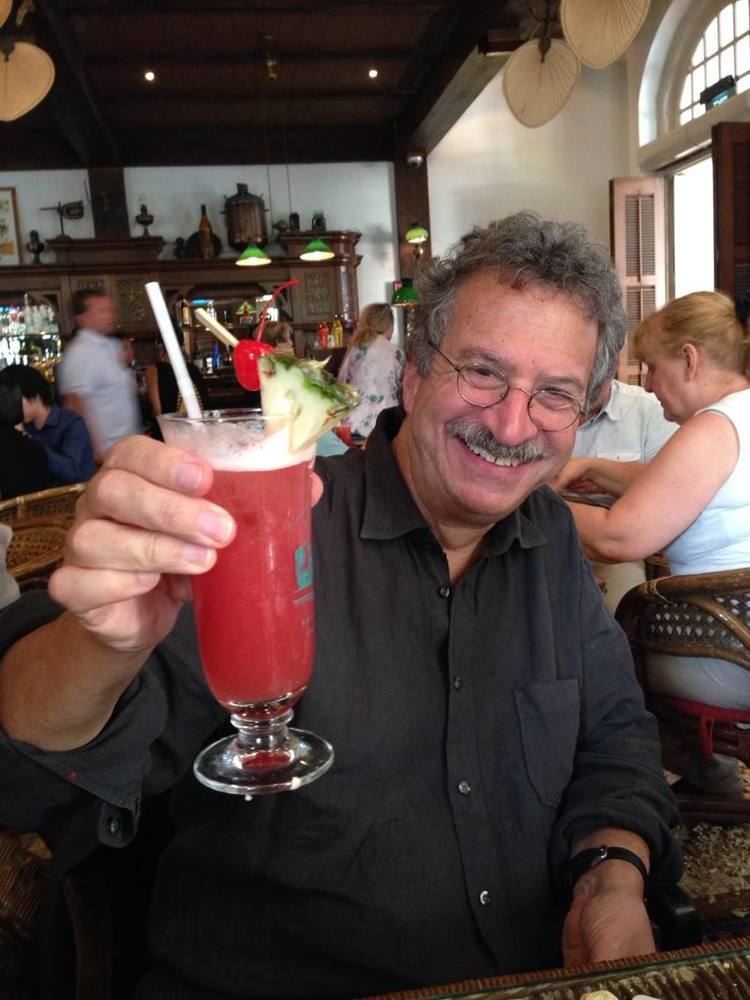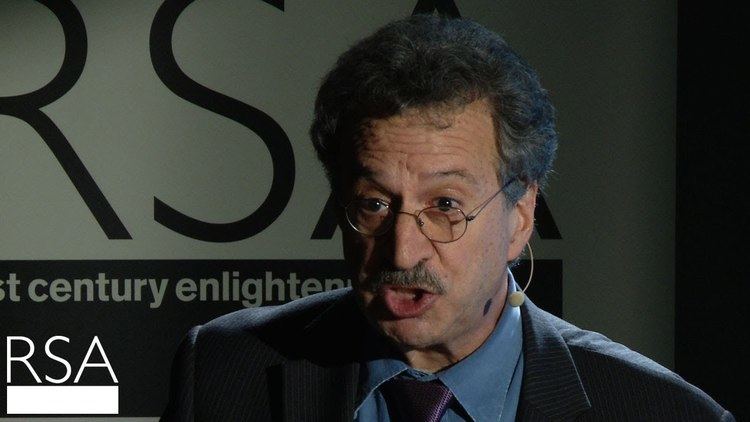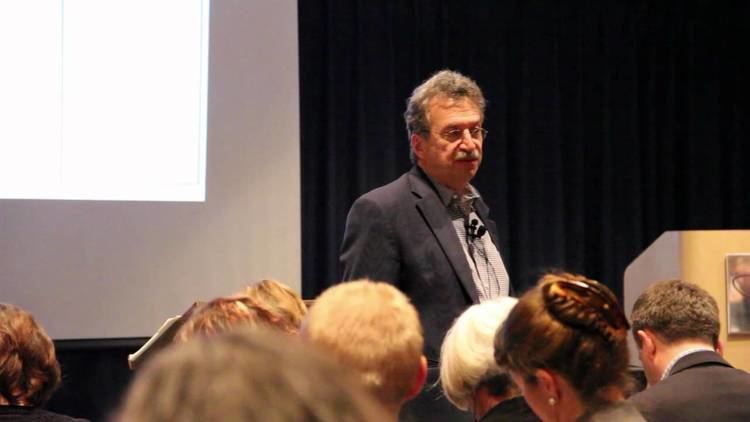Name Robert Kegan Role Psychologist | ||
 | ||
Books Immunity to Change: How to O, In Over Our Heads: The Mental D, The evolving self, How the Way We Talk Can, Change Leadership: A Practic | ||
The further reaches of adult development robert kegan
Robert Kegan (born August 24, 1946) is an American developmental psychologist and author. He was the William and Miriam Meehan Professor in Adult Learning and Professional Development at Harvard Graduate School of Education, where he taught for forty years until his retirement in 2016. Additionally he was the Educational Chair for the Institute for Management and Leadership in Education and the Co-director for the Change Leadership Group. He is a licensed psychologist and practicing therapist, has lectured widely to professional and lay audiences, and consults in the area of professional development.
Contents
- The further reaches of adult development robert kegan
- An evening with robert kegan and immunity to change
- Education and early career
- The Evolving Self
- In Over Our Heads
- Immunity to Change
- Criticism
- Key publications
- References

An evening with robert kegan and immunity to change
Education and early career

Born in Minnesota, Kegan attended Dartmouth College, graduating summa cum laude in 1968. He has described the civil rights movement and the movement against the Vietnam War as formative experiences during his college years. He took his "collection of interests in learning from a psychological and literary and philosophical point of view" to Harvard University, where he earned his Ph.D. in 1977.
The Evolving Self

In his book The Evolving Self (1982), Kegan explores human life problems from the perspective of a single process which he calls meaning-making, the activity of making sense of experience through discovering and resolving problems. "Thus it is not that a person makes meaning, as much as that activity of being a person is the activity of meaning-making," Kegan says. Meaning-making is a lifelong activity that begins in earliest infancy and can evolve in complexity through a series of "evolutionary truces" (or "evolutionary balances") that establish a balance between self and other (in psychological terms), or subject and object (in philosophical terms), or organism and environment (in biological terms). Each evolutionary truce is both an achievement of and a constraint on meaning-making, possessing both strengths and limitations. And each evolutionary truce presents a new solution to the lifelong tension between how people are connected, attached, and included, on the one hand (integration), and how people are distinct, independent, and autonomous on the other (differentiation).
The purpose of the book is primarily to give professional helpers (such as counselors, psychotherapists, and coaches) a broad, developmental framework for empathizing with their clients' different ways of making sense of their problems. Kegan adapts Donald Winnicott's idea of the holding environment and proposes that the evolution of meaning-making is a life history of holding environments, or cultures of embeddedness. Kegan describes cultures of embeddedness in terms of three processes: confirmation (holding on), contradiction (letting go), and continuity (staying put for reintegration). For Kegan, "the person is more than an individual," and developmental psychology is the study of the evolution of cultures of embeddedness, not the study of isolated individuals. "One of the most powerful features of this psychology, in fact, is its capacity to liberate psychological theory from the study of the decontextualized individual. Constructive-developmental psychology reconceives the whole question of the relationship between the individual and the social by reminding that the distinction is not absolute, that development is intrinsically about the continual settling and resettling of this very distinction." Kegan shows how some of the psychological distress that people experience (including some depression and anxiety) can be thought of as a result of the "natural emergencies" that happen when "the terms of our evolutionary truce must be renegotiated" and a new culture of embeddedness must emerge.
The Evolving Self is notable for its theoretical integration of three very different intellectual traditions. The first is the humanistic and existential-phenomenological tradition (which includes Martin Buber, Prescott Lecky, Abraham Maslow, Rollo May, Ludwig Binswanger, Andras Angyal, and Carl Rogers). The second is the neo-psychoanalytic tradition (which includes Anna Freud, Erik Erikson, Ronald Fairbairn, Donald Winnicott, Margaret Mahler, Harry Guntrip, John Bowlby, and Heinz Kohut). The third is what Kegan calls the constructive-developmental tradition (which includes James Mark Baldwin, John Dewey, George Herbert Mead, Jean Piaget, Lawrence Kohlberg, William G. Perry, and Jane Loevinger). The book is also strongly influenced by dialectical philosophy and psychology and by Carol Gilligan's psychology of women. Despite the book's wealth of human stories, due to the density of Kegan's writing and its conceptual complexity, some readers have found it difficult to read.
Kegan presents a sequence of six evolutionary balances: incorporative, impulsive, imperial, interpersonal, institutional, and interindividual. The following table is a composite of several tables in The Evolving Self that summarize these balances. The object (O) of each balance is the subject (S) of the preceding balance. The process of emergence of each evolutionary balance is described in detail in the text of the book; as Kegan says, his primary interest is the ontogeny of these balances, not just their taxonomy.
The final chapter of The Evolving Self, titled "Natural Therapy," is a meditation on the philosophical and ethical fundamentals of the helping professions. Kegan argues, similarly to later theorists of asset-based community development, that professional helpers should base their practice on people's existing strengths and "natural" capabilities. The careful practice of "unnatural" (self-conscious) professional intervention may be important and valuable, says Kegan; nevertheless "rather than being the panacea for modern maladies, it is actually a second-best means of support, and arguably a sign that the natural facilitation of development has somehow and for some reason broken down." Helping professionals need a way of evaluating the quality of people's evolving cultures of embeddedness so as to provide opportunities for problem-solving and growth, while acknowledging that the evaluator too has his or her own evolving culture of embeddedness. Kegan warns that professional helpers should not delude themselves into thinking that their conceptions of health and development are unbiased by their particular circumstances or partialities. He acknowledges the importance of Thomas Szasz's "suggestion that mental illness is a kind of myth," and he says that we need a way to address what Szasz calls "problems in living" while protecting clients as much as possible from the helping professional's partialities and limitations.
The Evolving Self has been cited favorably by Mihaly Csikszentmihalyi, Ronald A. Heifetz, Ruthellen Josselson, and George Vaillant.
In Over Our Heads
Kegan's book In Over Our Heads (1994) extends the perspective on psychological development formulated in his earlier book The Evolving Self. What Kegan earlier called "evolutionary truces" of increasing subject–object complexity are now called "orders of consciousness." In Over Our Heads explores what happens, and how people feel, when new orders of consciousness emerge, or fail to emerge, in the domains of parenting (families), partnering (couples), working (companies), healing (psychotherapies), and learning (schools). He connects the idea of orders of consciousness with the idea of a hidden curriculum of everyday life. Kegan repeatedly points to the suffering that can result when people are presented with challenging tasks and expectations without the necessary support to master them.
In addition, Kegan now distinguishes between orders of consciousness (cognitive complexity) and styles (stylistic diversity). Theories of style describe "preferences about the way we know, rather than competencies or capacities in our knowing, as is the case with subject–object principles." Kegan's writing in this book continues the same combination of detailed storytelling and theoretical analysis found in his earlier book, but now he presents a "more complex bi-theoretical approach" rather than the single subject–object theory he presented in The Evolving Self.
The following table is a composite of several tables from In Over Our Heads that summarizes the orders of consciousness explored in the book, with the domain of learning history as an example. The object (O) of each order of consciousness is the subject (S) of the preceding order.
In the last chapter of In Over Our Heads, titled "On Being Good Company for the Wrong Journey," Kegan warns that it is easy to misconceive the nature of the mental transformation that a person needs or seeks to make. Whatever the virtues of higher orders of consciousness, no one should expect us to master them when we are not ready or when we are without the necessary support; and we are unlikely to be helped by someone who assumes that we are engaged at a certain order of consciousness when we are not. He ends the book with a paean to passionate engagement and to the creative unpredictability of human lives.
In Over Our Heads has been cited favorably by Morton Deutsch, John Heron, David A. Kolb, and Jack Mezirow.
Immunity to Change
Kegan's next book, How the Way We Talk Can Change the Way We Work (2001), co-authored with Lisa Laskow Lahey, jettisons the theoretical framework of his earlier books The Evolving Self and In Over Our Heads and instead presents a practical method, called the immunity map, intended to help readers overcome an immunity to change. An immunity to change is the "processes of dynamic equilibrium, which, like an immune system, powerfully and mysteriously tend to keep things pretty much as they are."
The immunity map continues the general dialectical pattern of Kegan's earlier thinking but without any explicit use of the concept of "evolutionary truces" or "orders of consciousness." The map primarily consists of a four-column worksheet that is gradually filled in by individuals or groups of people during a structured process of self-reflective inquiry that involves asking questions such as: "What are the changes that we think we need to make?" "What are we doing or not doing to prevent ourselves (immunize ourselves) from making those changes?" "What anxieties and big assumptions does that doing or not doing imply?" "How can we test those big assumptions so as to disturb our immunity to change and make possible new learning and change?" The following table presents an example of an immunity map.
In How the Way We Talk Can Change the Way We Work, Kegan and Lahey progressively introduce each of the four columns of the immunity map in four chapters that show how to transform people's way of talking to themselves and others. In each case, the transformation in people's way of talking is a shift from a habitual and unreflective pattern to a more deliberate and self-reflective pattern. The four transformations, each of which corresponds to a column of the immunity map, are:
In three subsequent chapters, Kegan and Lahey present three transformations that groups of people can make in their social behavior, again from a lesser to greater self-reflective pattern:
Immunity to Change (2009), the next book by Kegan and Lahey, revisits the immunity map of their previous book. The authors describe three dimensions of immunity to change: the change-preventing system (thwarting challenging aspirations), the feeling system (managing anxiety), and the knowing system (organizing reality). They further illustrate their method with a number of actual case studies from their experiences as consultants, and they connect the method to a dialectic of three mindsets, called socialized mind, self-authoring mind, and self-transforming mind. (These correspond to three of the "evolutionary truces" or "orders of consciousness" in Kegan's earlier books.) Kegan and Lahey also borrow and incorporate some frameworks and methods from other thinkers, including Ronald A. Heifetz's distinction between technical and adaptive learning, Chris Argyris's ladder of inference, and the four stages of competence. They also provide more detailed guidance on how to test big assumptions.
The revised immunity map worksheet in Immunity to Change has the following structure: (0) Generating ideas. (1) Commitment (improvement) goals. (2) Doing / not doing. (3) Hidden competing commitment (and worry box). (4) Big assumption. (5) First S-M-A-R-T test: Safe, Modest, Actionable, Research stance (not a self-improvement stance), Test.
The immunity to change framework has been cited favorably by Chris Argyris, Kenneth J. Gergen, Manfred F.R. Kets de Vries, and Tony Schwartz.
Criticism
Adult education professor Ann K. Brooks has criticized Kegan's book In Over Our Heads. She claims that Kegan falls victim to a cultural "myopia" that "perfectly reflects the rationalist values of modern academia." Brooks also says that Kegan excludes "the possibility of a developmental trajectory aimed at increased connection with others," which is contradicted by Ruthellen Josselson's statement that Kegan "has made the most heroic efforts" to balance individuality and connection with others in his work.
